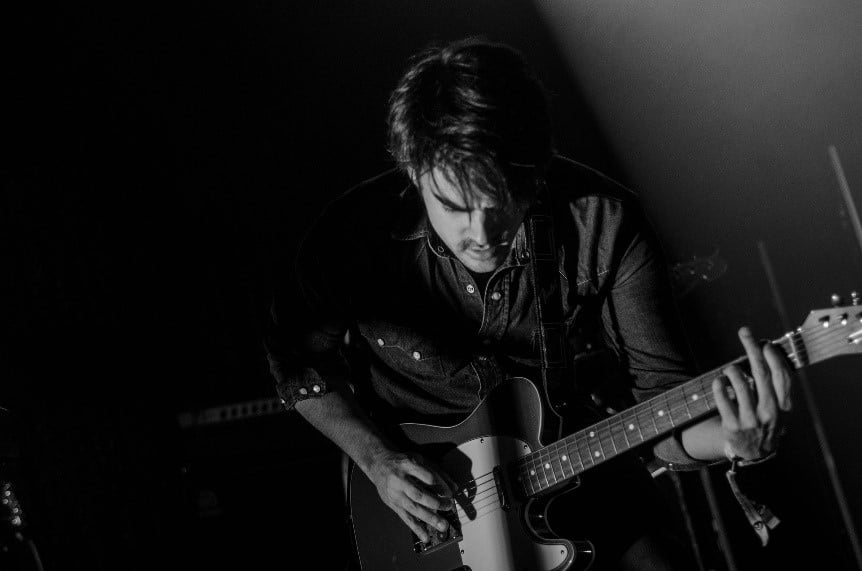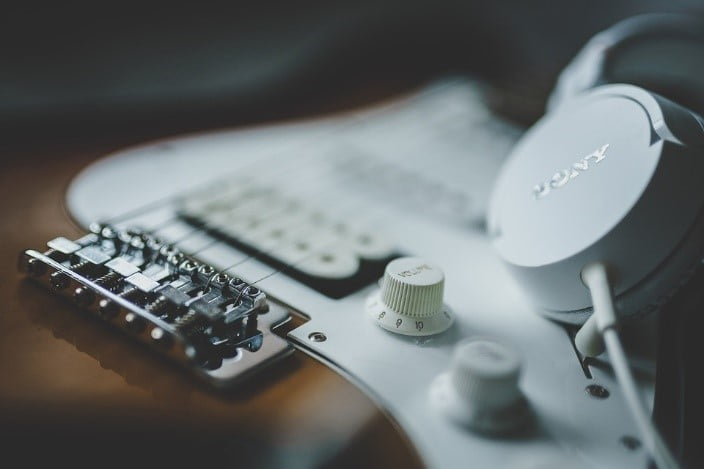Don’t hurt yourself: How to avoid guitar-related injuries
Author: Bruno Gonçalves
This week something just caught my eye in a guitar group on social media. Someone asked for help, because of an injury in their right arm from playing guitar. He was almost on the point of not being able to play and it affected other day-to-day activities too. Sad as it was, it hit right home: I had a very similar experience between 8 and 9 years ago.
 I remember the fear of not being able to play guitar anymore. Back then, I had not even started my career as a pro musician and teacher yet, and I had serious intention of doing so. I was frightened. I never imagined I would end up in that situation… and I was deep in it!
I remember the fear of not being able to play guitar anymore. Back then, I had not even started my career as a pro musician and teacher yet, and I had serious intention of doing so. I was frightened. I never imagined I would end up in that situation… and I was deep in it!
Guitar-related injuries deserve more attention so both newcomers and experienced players can avoid it. Everyone should know what to do when the pain starts to get acute, how to overcome it and what steps to take once they are back to the guitar.
With that in mind, the intention of this article is to talk about something that is often overlooked, but dangerous: chasing high speeds without the right strategies or trying to play songs that are well above your current skill level.
Use hard song parts as exercises
Take that phrase that drives you mad, the hardest of the whole solo or song and isolate it: use it as an exercise. Repeat it over and over again, without wandering off to the song itself. Imagine that you found it on a guitar technique article, and practice only that phrase.
Look for the hardest parts within the phrase, be it a position shift, a wide stretch or an intense picking moment. That’s your arch enemy: Deal with it first so you can play the whole phrase in the right timing (don’t push with the speed, just get everything sounding good and the rhythm of notes tight).
Imagine that the song is a big rubber band, and you’re stretching it: The note values remain the same, only the tempo is slower now. This is how you should practice the phrases or the rhythm guitar. Slower but sounding like the original.
Don’t rush it
The obvious part, and the hardest one, is not rushing it. Taking your time to learn your phrases (s l o w l y, remember the ‘rubber band’ concept) while building the technique needed will take you a long way.
Practicing slow is an important part of playing fast, because here is where you’ll develop accuracy and the tension blueprint for playing fast. If you can’t play relaxed even slow, things are going to get pretty exhausting at higher tempos.
Start by practicing to relax the muscles that are directly related to playing: your hands, forearms, wrists and shoulders while playing a certain phrase or exercise.
After that, do a few speed bursts (try playing it at your top speed for a few seconds) and look for tension in other muscles that aren’t directly related to playing: your tongue, shoulders, back or neck. Those will be the next target. As soon as you eliminate most of the stiffness, you will be able to play way lighter and it can gradually help you with endurance and speed.
This shouldn’t be overlooked. Almost all injuries comes from excessive tension and trying to rush through it. On the other side there’s no perfect playing or sixteenth notes at 190bpm. There’s only pain and problems, so you might as well choose the path that is a bit longer but won’t give you tendonitis or injuries.
Be honest about your current level
I once read somewhere that you should only take on songs that you can nail in less than a week. While I find that a little extreme, the concept behind is incredible: Don’t waste months on a song. It is frustrating and most of the time won’t help you with anything. Choose songs that are easy to moderate based on your current level, nail them and have fun.
Of course it is ok to spend a few weeks mastering a section, but don’t try to learn instrumental masterpieces that are well above your level, so you don’t spend 3 months on a single song (I’m guilty of doing that, and the worst part is that I don’t even remember most of it anymore).
When it hurts…
If you start to notice acute pain, or pain even without the guitar, stop and rethink what you’re currently practicing or learning. Sometimes we don’t realize what’s going on till it’s too late, so it’s good to take a step back at the first sign of it. I’m not talking about normal pain on the fingers after practicing barre chords or your hand fingertips hurting after you just started tapping.
What I’m talking about is when it starts to hurt playing the guitar or not: when the pain is there while you’re on your computer, on your smartphone and while you’re driving. Stop immediately, think hard about what you practiced last month and try to find the reason. Notice when the pain shows up when you’re playing, and fix that tension as soon as possible. Step back from practicing that item, speed or hard phrases if needed during your healing period.
I used ice a lot to diminish the pain (just freeze up a plastic bottle of water) and use it on the muscles a couple of times a day. Of course, go to your doctor for a precise diagnostic if you got acute pain and follow the treatment.
Finishing up
When all is said and done, just remember that YOU CAN come back to the guitar. You only need to stop doing what’s hurting you ASAP, so you can avoid further damage and complications. If you had to step away from the guitar for a few weeks, come back slowly and remember: always warm up properly before practicing demanding phrases, runs or solos.
 Practice songs that are on your level or just a little above. Also, don’t practice demanding things every day, since our hands never stop working during our day-to-day activities.
Practice songs that are on your level or just a little above. Also, don’t practice demanding things every day, since our hands never stop working during our day-to-day activities.
It is all about having patience, just as a pro basketball player doesn’t start the game without properly warming up all his muscles you should do the same. Warm up your hands and arms properly playing real slow for a couple of minutes, using an exercise or a scale. Follow these advices and you should be good to go: If you have pain, you have the means to solve it. If you don’t, it’s great: you will be able to spot it from the distance and stop it before it reaches you.
About the author: Bruno Gonçalves is a full-time guitar teacher, pro musician and digital effects enthusiast from Ribeirão Preto, Brazil. To find out more about his work and read more articles, you can visit www.bgsmusical.com.br
